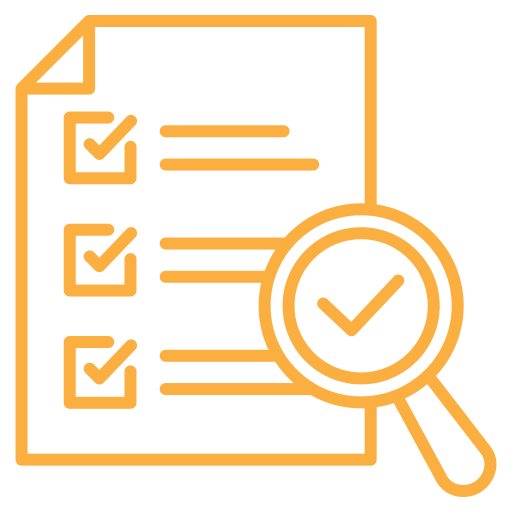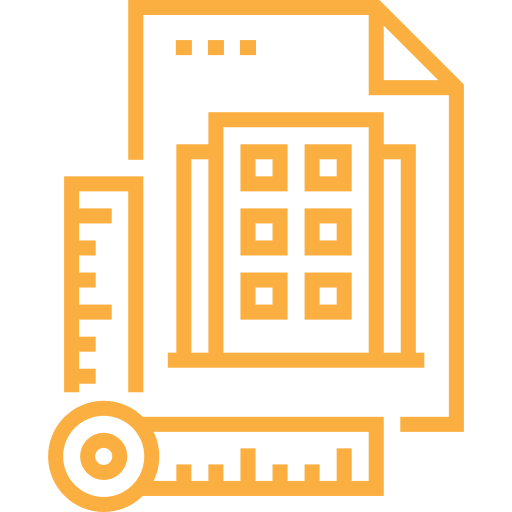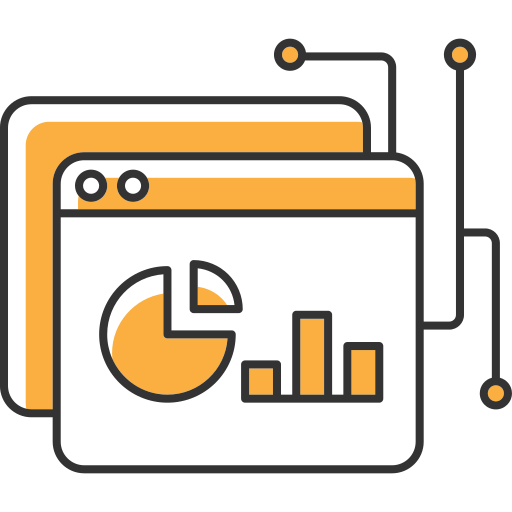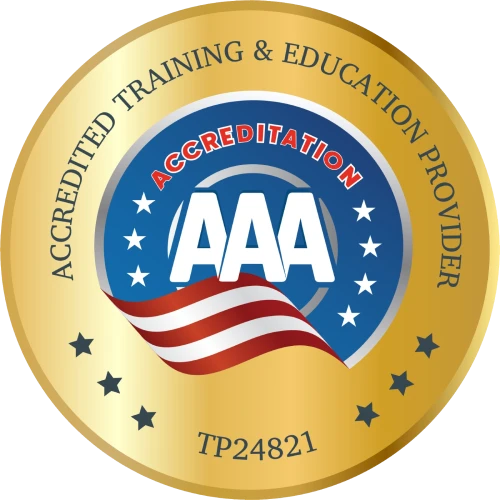Database Management System
This course is tailored to make you a highly skilled Database Engineer with extensive knowledge of SQL query writing, MySQL tool, and DBMS techniques.


Our Placements
Our Students Who Have landed Their Dream job In














Sessions
10 Lectures
Duration
20 Hrs
Placement
100% Assurance*
Job CTC
Upto 8 LPA*
Sessions
10 Lectures
Duration
20 Hrs
Placement
100% Assurance*
Job CTC
Upto 8 LPA*
LAND YOUR DREAM JOB

Ascend as a Database Administrator at financial powerhouses like JPMorgan Chase

Thrive as a Data Analyst with analytics leaders like Google

Evolve into a Data Architect at cloud computing giants like AWS

Innovate as a BI Developer at market leaders like Microsoft
Make You Industry-Ready
EXCLUSIVE CAREER
Why Join Us?
Hands-On Training
Experience our interactive, hands-on teaching approach through a free course demo.
Industry-Leading Mentors
Learn from seasoned professionals who have pioneered advancements in their industries.
Job Readiness
Receive personalized career guidance and placement assistance.
Tools and technologies

Expert-Designed Course Structure
Interactive Learning Exp
Engage in hands-on labs, quizzes, and real-world case studies to reinforce your understanding of DBMS concepts.
Expert Instruction
Learn from experienced database professionals with expertise in database design, administration, and optimisation.
Career guidance and placement assistance
Receive personalized support to sharpen your job search skills and secure rewarding opportunities.
Flexible Learning
Access course materials online at your own pace, enabling you to balance your studies with other commitments.
Practical Projects
Apply your knowledge through practical projects that simulate real-world scenarios, allowing you to build a robust portfolio of DBMS skills.
Comprehensive Curriculum
Master a wide range of concepts and techniques through a meticulously designed and up-to-date curriculum.
Course Overview
1
- Understanding the fundamentals of DBMS and its importance in modern software development
- Exploring different types of database models (relational, NoSQL, etc.)
2
- Learning the architecture and components of a typical DBMS
- Understanding relational database concepts such as tables, rows, columns, and relationships
3
- Exploring Structured Query Language (SQL) for data manipulation and retrieval
- Learning normalization techniques to optimize database design and performance
4
- Mastering database design principles and methodologies
- Understanding database constraints, indexes, and keys for data integrity and performance optimization
5
- Performing basic to advanced SQL queries for data retrieval, filtering, sorting, and aggregation
- Exploring advanced SQL features such as subqueries and joins
6
- Learning techniques for optimizing query performance and troubleshooting common query issues
OUR CURRICULUM
Our Interactive Course Content
Topics covered
1. Introduction to DBMS
2. What is MySQL?
3. Installation of MySQL
4. Overview of MySQL Workbench
5. Different Clauses in MySQL
- The SELECT Clause
- The WHERE Clause
- The AND, OR, and NOT Operators
- The IN Operator
- The BETWEEN Operator
- The LIKE Operator
- The REGEXP Operator
- The IS NULL Operator
- The ORDER BY Clause
- The LIMIT Clause
- The GROUP BY Clause
- The HAVING Clause
6. Operators in MySQL
- Arithmetic Operators
- Concatenation Operator
- Comparison Operators
- Relational Operator
- Logical Operator
- Special Operator
7. TYPES OF JOINS
- INNER JOINS
- JOINING ACROSS DATABASES
- SELF JOINS
- JOINING MULTIPLE TABLES
- COMPOUND JOIN CONDITIONS
- IMPLICIT JOIN SYNTAX
- OUTER JOINS
- OUTER JOIN BETWEEN MULTIPLE TABLES
- SELF-OUTER JOINS
- THE USING CLAUSE IN JOINS
- NATURAL JOINS
- CROSS JOINS
- UNIONS
8. SUB-QUERY
9. DATA DEFINITION LANGUAGE (DDL)
- CREATE
- RENAME
- ALTER
- TRUNCATE
- DROP
10. Data Manipulation Language (DML)
- INSERT
- UPDATE
- DELETE
11. Transaction Control Language (TCL)
- COMMIT
- ROLLBACK
- SAVEPOINT
12. Data Control Language (DCL)
- GRANT
- REVOKE
Land your Dream Jobs
In Companies Like

Experience the CDPL
Training Approach
| Video Courses | Bootcamps | CDPL | |
|---|---|---|---|
| Real work experience | ✖ | ✖ | ✔ |
| True, project-based learning | ✖ | ✖ | ✔ |
| Live sessions & mentorship | ✖ | ✔ | ✔ |
| Job-ready portfolio | ✖ | ✖ | ✔ |
| Externship with top companies | ✖ | ✖ | ✔ |
| Career guidance | ✖ | ✔ | ✔ |
| Placement Assurance | ✖ | ✖ | ✔ |
Eligibility
Undergraduates
Undergraduates or job seekers seeking to launch their careers in the IT domain.
Graduates
Fresh graduates or postgraduates aiming to establish their careers in the IT domain.
Professionals
Working professionals with non-IT experience who want to transition to the IT field.
Our Process
LIVE Learning
Experience Immersive Learning Through Our Live Classrooms

Onboarding Session
Kick-start Your Learning Journey with Our On-boarding Session
Certification & Placement Support
Certification to Career: Let Us Guide Your Path to Success
LIVE Learning
Experience Immersive Learning Through Our Live Classrooms
Onboarding Session
Kick-start Your Learning Journey with Our On-boarding Session
Certification & Placement Support
Certification to Career: Let Us Guide Your Path to Success
- Get free demo session
- Online Sessions
- Hands on session
- Placement Assurance*

- Get free demo session
- Online Sessions
- Hands on session
- Placement Assurance*
Some figures that matters
Learners
Years of Industry Experience
Corporate Clients
FAQ: Database Management System Classes
What is database management system class?
A Database Management System (DBMS) class typically refers to a course or educational program that focuses on teaching the principles, theories, and practical applications of database management systems. These classes are commonly offered in computer science, information technology, or related fields at universities and colleges.
In a DBMS class, students learn about various aspects of database management, including:
- Fundamental Concepts: This includes understanding the basic concepts of databases, data models, database architecture, and the role of a DBMS in managing and organizing data.
- Relational Database Management Systems (RDBMS): Students typically learn about relational databases, SQL (Structured Query Language), and how to design, create, query, and manage relational databases using systems like MySQL, PostgreSQL, or Oracle.
- Database Design and Normalization: Students study techniques for designing efficient and normalized database schemas to ensure data integrity, minimize redundancy, and optimize performance.
- Data Manipulation and Querying: This involves learning how to perform various operations on a database, such as inserting, updating, deleting, and querying data using SQL.
- Database Administration: Students may also learn about database administration tasks, including user management, security, backup and recovery, and performance tuning.
- Advanced Topics: Depending on the curriculum, DBMS classes may cover advanced topics such as distributed databases, NoSQL databases, transaction management, concurrency control, and database optimization.
How to learn database management systems?
Learning database management systems (DBMS) can be an enriching journey, and here's a step-by-step guide to get started:
- Understand the Basics: Begin by understanding what a database is and why it's important. Learn about the different types of databases (relational, NoSQL, etc.) and their uses.
- Learn SQL: Structured Query Language (SQL) is the standard language for interacting with relational databases. Start with basic SQL commands like SELECT, INSERT, UPDATE, and DELETE. There are numerous online resources, tutorials, and courses available to learn SQL.
- Database Concepts: Familiarize yourself with fundamental database concepts such as tables, rows, columns, primary keys, foreign keys, normalization, and indexing. Understanding these concepts will lay a strong foundation for learning more advanced topics.
- Choose a DBMS: Decide which database management system you want to learn. Popular options include MySQL, PostgreSQL, Oracle, SQL Server, MongoDB, and SQLite. Each has its own syntax, features, and use cases.
- Hands-on Practice: Practice is key to mastering DBMS. Set up a local development environment or use online platforms like SQL Fiddle, db-fiddle, or SQLZoo to practice writing SQL queries and working with databases.
- Database Design: Learn about database design principles such as entity-relationship modeling (ERD), schema design, and normalization. Understanding how to design efficient and scalable databases is crucial for building robust applications.
- Advanced Topics: Dive deeper into advanced topics based on your interests and career goals. This could include transactions, stored procedures, triggers, database security, performance tuning, and data warehousing.
- Real-world Projects: Apply your knowledge to real-world projects. Build small applications that interact with databases, create database-driven websites, or contribute to open-source projects. Practical experience will solidify your understanding and skills.
- Stay Updated: The field of database management is constantly evolving, with new technologies and best practices emerging regularly. Stay updated by following industry blogs, attending webinars, and participating in online communities like Stack Overflow and Reddit.
- Continuous Learning: Lastly, embrace the mindset of continuous learning. Explore advanced topics, experiment with new technologies, and challenge yourself to solve complex problems. The more you practice and learn, the more proficient you'll become in database management systems.
What are the 4 types of DBMS?
There are primarily four types of Database Management Systems (DBMS), each with its own unique structure, capabilities, and use cases:
- Hierarchical DBMS: In a hierarchical DBMS, data is organized in a tree-like structure with parent-child relationships. Each parent record can have multiple child records, but each child record has only one parent. This model is efficient for representing data with a fixed, predictable structure, such as organizational charts. However, it can be less flexible for representing complex relationships.
- Network DBMS: Network DBMS extends the hierarchical model by allowing each child record to have multiple parent records, creating a network-like structure. This allows for more flexible relationships between data entities. Network DBMS was popular in the 1970s and 1980s but has been largely replaced by relational databases.
- Relational DBMS: Relational DBMS (RDBMS) is the most widely used type of DBMS today. Data in a relational database is organized into tables with rows and columns. Relationships between tables are established using primary and foreign keys. RDBMS offers a flexible and efficient way to manage structured data and is suitable for a wide range of applications, from small business databases to large-scale enterprise systems. Examples include MySQL, PostgreSQL, Oracle Database, SQL Server, and SQLite.
- NoSQL DBMS: NoSQL (Not Only SQL) DBMS encompasses various database technologies that diverge from the traditional relational model. NoSQL databases are designed to handle large volumes of unstructured or semi-structured data and offer features like horizontal scalability, flexible schema, and high performance. There are different types of NoSQL databases, including document stores, key-value stores, column-family stores, and graph databases. Examples include MongoDB, Cassandra, Redis, Amazon DynamoDB, and Neo4j.
Each type of DBMS has its strengths and weaknesses, and the choice of which to use depends on factors such as the nature of the data, scalability requirements, performance considerations, and the specific needs of the application.
Is DBMS and SQL same?
No, DBMS (Database Management System) and SQL (Structured Query Language) are not the same, but they are closely related.
- DBMS: DBMS refers to the software system that manages databases. It provides an interface for users and applications to interact with the database, allowing them to store, retrieve, update, and manage data efficiently. DBMS handles tasks such as data storage, indexing, security, concurrency control, and recovery.
- SQL: SQL, on the other hand, is a programming language specifically designed for managing and manipulating data within a relational database management system (RDBMS). It is the standard language for interacting with relational databases. SQL allows users to perform various operations on the data, such as querying, inserting, updating, and deleting records. It provides a set of commands (e.g., SELECT, INSERT, UPDATE, DELETE) for these tasks.
While SQL is commonly associated with relational databases and RDBMS, it's important to note that not all DBMSs use SQL. For example, some NoSQL databases have their own query languages tailored to their specific data models.
In summary, DBMS is the software system that manages databases, while SQL is the language used to interact with relational databases within a DBMS. They work together to facilitate efficient data management and manipulation.
What is DBMS used for?
Database Management Systems (DBMS) serve a variety of critical functions across different industries and applications:
- Data Organization: DBMS organizes data in a structured format, typically using tables, rows, and columns. This structured approach allows for efficient storage and retrieval of data.
- Data Retrieval: DBMS enables users to retrieve specific data quickly and easily using queries written in languages like SQL (Structured Query Language). This capability is essential for various tasks, such as generating reports, analyzing trends, and making data-driven decisions.
- Data Manipulation: DBMS allows users to insert, update, and delete data within the database. This capability ensures data accuracy and integrity by enabling users to modify existing data as needed.
- Data Security: DBMS provides mechanisms for controlling access to the database, ensuring that only authorized users can view, modify, or delete data. This helps protect sensitive information from unauthorized access or tampering.
- Concurrency Control: DBMS manages concurrent access to the database by multiple users or applications, ensuring data consistency and preventing conflicts such as data corruption or loss.
- Data Backup and Recovery: DBMS facilitates data backup and recovery processes, allowing organizations to create backups of their data and restore it in the event of system failures, disasters, or other unforeseen circumstances.
- Scalability: DBMS systems are designed to handle large volumes of data and support scalability as data needs grow over time. This scalability ensures that databases can accommodate increasing data loads without sacrificing performance or reliability.
- Data Integrity and Consistency: DBMS enforces data integrity constraints, such as primary key and foreign key constraints, to maintain data consistency and accuracy. This helps prevent data anomalies and ensures that the database remains reliable and trustworthy.
Overall, DBMS plays a crucial role in managing and maintaining structured data efficiently, securely, and reliably, making it an indispensable tool for modern organizations across various industries.


